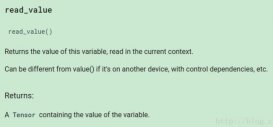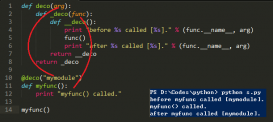|
1
2
3
4
5
6
7
8
9
10
11
12
13
14
15
16
|
#!/usr/local/bin/python3.7import timeimport os count = 0str = ('python b.py')result1 = os.system(str)print(result1)while True: count = count + 1 if count == 8: print('this count is:',count) break else: time.sleep(1) print('this count is:',count) print('Good Bye') |
另外一个python脚本b.py如下:
|
1
2
|
#!/usr/local/bin/python3.7print('hello world') |
运行结果:
[python@master2 while]$ python a.py
hello world
this count is: 1
this count is: 2
this count is: 3
this count is: 4
this count is: 5
this count is: 6
this count is: 7
this count is: 8
Good Bye
2.python调用shell方法os.system()
|
1
2
3
4
5
6
7
8
9
10
11
12
13
14
|
#!/usr/local/bin/python3.7import timeimport os count = 0n = os.system('sh b.sh')while True: count = count + 1 if count == 8: print('this count is:',count) break else: time.sleep(1) print('this count is:',count) print('Good Bye') |
shell脚本如下:
|
1
2
|
#!/bin/shecho "hello world" |
运行结果:
[python@master2 while]$ python a.py
hello world
this count is: 1
this count is: 2
this count is: 3
this count is: 4
this count is: 5
this count is: 6
this count is: 7
this count is: 8
Good Bye
3.python调用shell方法os.popen()
|
1
2
3
4
5
6
7
8
9
10
11
12
13
14
|
#!/usr/local/bin/python3.7import timeimport os count = 0n = os.system('sh b.sh')while True: count = count + 1 if count == 8: print('this count is:',count) break else: time.sleep(1) print('this count is:',count) print('Good Bye') |
运行结果:
[python@master2 while]$ python a.py
<os._wrap_close object at 0x7f7f89377940>
['hello world\n']
this count is: 1
this count is: 2
this count is: 3
this count is: 4
this count is: 5
this count is: 6
this count is: 7
this count is: 8
Good Bye
os.system.popen() 这个方法会打开一个管道,返回结果是一个连接管道的文件对象,该文件对象的操作方法同open(),可以从该文件对象中读取返回结果。如果执行成功,不会返回状态码,如果执行失败,则会将错误信息输出到stdout,并返回一个空字符串。这里官方也表示subprocess模块已经实现了更为强大的subprocess.Popen()方法。
总结
以上所述是小编给大家介绍的3种python调用其他脚本的方法,希望对大家有所帮助,如果大家有任何疑问请给我留言,小编会及时回复大家的。在此也非常感谢大家对服务器之家网站的支持!
如果你觉得本文对你有帮助,欢迎转载,烦请注明出处,谢谢!
原文链接:https://www.cnblogs.com/xxpythonxx/archive/2020/01/05/12153598.html












